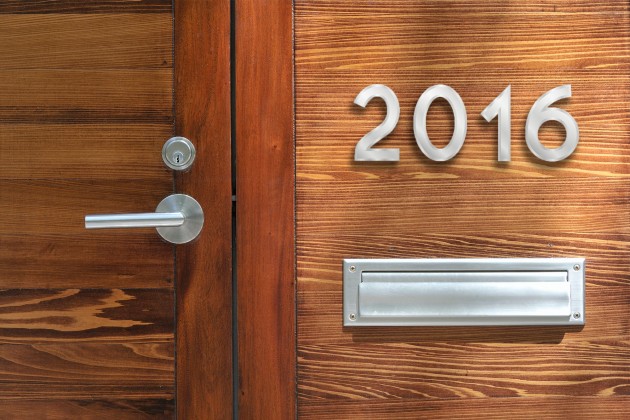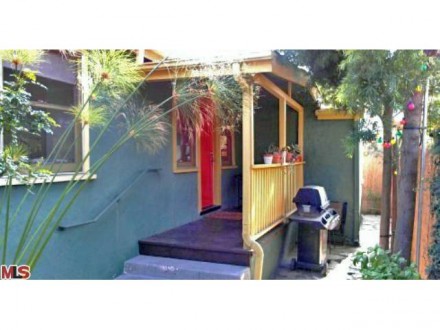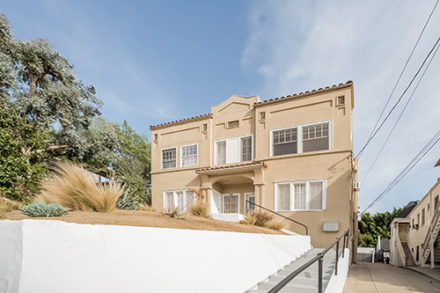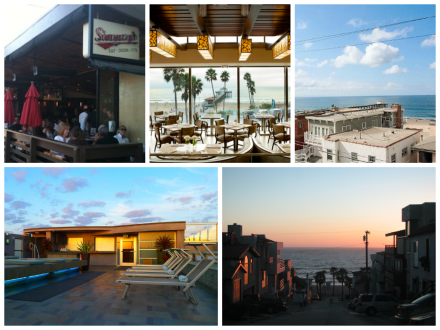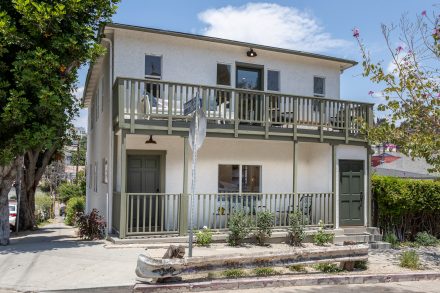A New Year brings new opportunities, and that’s certainly true if you’re looking to sell or buy a home in 2016. What exactly does the year ahead have in store for housing?
Industry experts point to a lot of promising signs — moderate increases in prices and sales, the creation of more households, and an improving job market — for the national housing picture in 2016. But the gains won’t look like they have over the past two years, and we’ll see more local housing markets stabilizing in the near future. And that’s a good thing.
After the deluge of damaging foreclosures and short sales that flooded U.S. cities during the downturn, a number of housing markets have recovered in a big way in recent years, to the relief of homeowners and economic analysts alike. In 2013, there were 5.09 million existing-home sales nationally, according to the National Association of Realtors. In 2014, sales dropped by 3.1% to 4.93 million. Although final figures for 2015 are not yet available, NAR predicted existing-home sales would close out the year at 5.3 million — nearly 7% higher than the previous year.
Here’s a closer look at five key housing predictions for 2016:
1. Rising rates will squeeze first-time homebuyers most
The Fed’s move to increase interest rates in December reflects the major strides the U.S. economy has made as it emerges from the Great Recession. Higher rates (though they haven’t happened yet), along with rising prices and limited supply, will make it harder for some to afford a new home. The good news: Long-term mortgage rates will see only a gradual increase this year and will remain relatively low compared with what they were before the downturn.
Thirty-year fixed-rate mortgages, which averaged under 4% for most of 2015, will average 4.4% this year, according to Freddie Mac. Meanwhile, housing data firm CoreLogic, in its latest U.S. Economic Outlook report, predicts mortgage rates will increase roughly half a percentage point in 2016 over 2015.
If you’re a first-time homebuyer or you earn a lower income and haven’t had a raise lately, the rate increase might make it harder for you to afford a home. For the most part, though, a slight rate bump isn’t cause for panic and is unlikely to sideline most potential homebuyers, says Christian Redfearn, an associate professor of real estate at the University of Southern California.
Increasing mortgage rates will clamp down on refinancing activity as fewer homeowners will have enough incentives to refinance their current mortgages, according to CoreLogic. As a result, the firm is forecasting refinance originations to decrease by one-third this year.
2. Sales will rise, but modestly
Even though mortgage rates are rising, home sales will still be up about 3% this year as existing homeowners jump into the selling pool, according to a forecast from the National Association of Realtors.
After years of depressed prices, many homeowners have regained much of the equity they lost in the downturn, so they may seek to cash in on that value and sell in 2016 to move up to their next home, NAR President Tom Salomone says. In some markets, though, prices have increased too quickly, causing a bumpy recovery that’s priced out some potential homebuyers, he says.
“We don’t want these big peaks and valleys we’ve seen since the downturn,” Salomone says. “Steady, sustainable growth is what we’re after.”
As the economy continues to grow and more jobs are added, potential homebuyers with strong credit will be more willing to jump into the market too, Salomone says.
3. House prices will increase, too, but not at 2015 levels
Another trend that sellers in particular will appreciate: Home prices will rise again this year by 4% to 5% as demand increases faster than supply, according to CoreLogic. Although the increase in home prices will outpace inflation, it’s less than the 6% increase seen in 2015.
The more measured growth of home sales and prices is good news for the millions of younger Americans who are on the cusp of homeownership. However, experts agree that a shortage of housing inventory and new construction, which leads to bidding wars and competitive market conditions, will fuel higher home prices until more sellers enter the market or more homes are built.
“We haven’t built enough housing for a long time,” Redfearn says.
4. Housing demand will be up
The improving job market has been a boon for new household formations, a term that refers to configurations of people who live together under one roof, be it you and a few roommates, a married couple, a nuclear family of four, or just you. This increase will continue in 2016, with more than 1.25 million new households expected to be formed.
Millennials — all 83.1 million of them — now outnumber baby boomers and comprise more than a quarter of the U.S. population, according to the Census Bureau. Many of them are moving out of their parents’ homes, getting married or having children. As they do, these young Americans will create higher housing demand, particularly for rental homes.
This new surge in demand is expected to spur more construction of single-family homes and multifamily apartment buildings, but not at the pace needed to keep up with new households. NAR forecasts 1.3 million single-family housing starts this year, but the country needs 1.5 million to keep pace with demand.
Freddie Mac predicts total housing starts will increase 16% from 2015 to 2016, but it’s still not enough. That’s why more people are turning to the rental market, which is faced with a similar crunch.
5. Rents will also rise
Construction of multifamily homes will increase this year, but there’s still a shortage of rental homes for the millions who need them. Rental vacancy rates are at or near their lowest level in 30 years, according to the CoreLogic report. Accordingly, rents in 2016 will continue to rise faster than inflation, CoreLogic predicts.
With rents climbing, it’s no wonder so many millennials struggle to afford a down payment. For starters, 41% of them are saddled with student loans that frequently run into the tens of thousands, according to NAR. Plus, wages are growing slowly or not at all as rents and other living costs get steeper. It’s a combination of challenges that makes it hard to save for a down payment on a home, experts say.
Homeownership rates will dip slightly again this year as the number of new households that rent exceeds the number of new homebuyers. However, 94% of renters under 34 surveyed by NAR say they still want to buy a home in the future, and that bodes well for a more balanced market in the years to come, Salomone says.
The bottom line
The housing market has come a long way since the Great Recession, but the recovery has been uneven, and some areas still have a long way to go.
A sustainable housing market, Salomone says, is one that’s fair for both buyers and sellers. All the signs we’ve mentioned point to a more balanced road ahead for housing, but it’ll take a little more time to get there.
Guest blog provided by Deborah Kearns, a staff writer at NerdWallet, a personal finance website. Email: dkearns@nerdwallet.com. Twitter: @debbie_kearns.
This article was originally posted on NerdWallet.
Are you looking to buy or sell home this year? TRG Realty Inc. is the parent company of The Rental Girl, and features our “For Sale” listings, as well as advice to buyers and sellers in the real estate market. If you’re thinking about transitioning from renting to buying, looking to move to a new neighborhood, or trying to sell your current home…head on over to TRG Realty and we’d to love to help you take the next step!
Happy Hunting!
The Rental Girl




